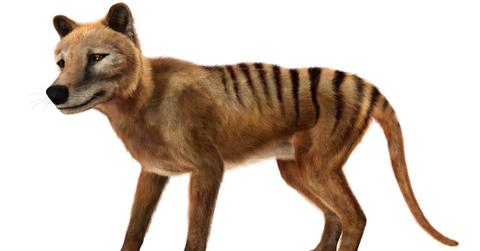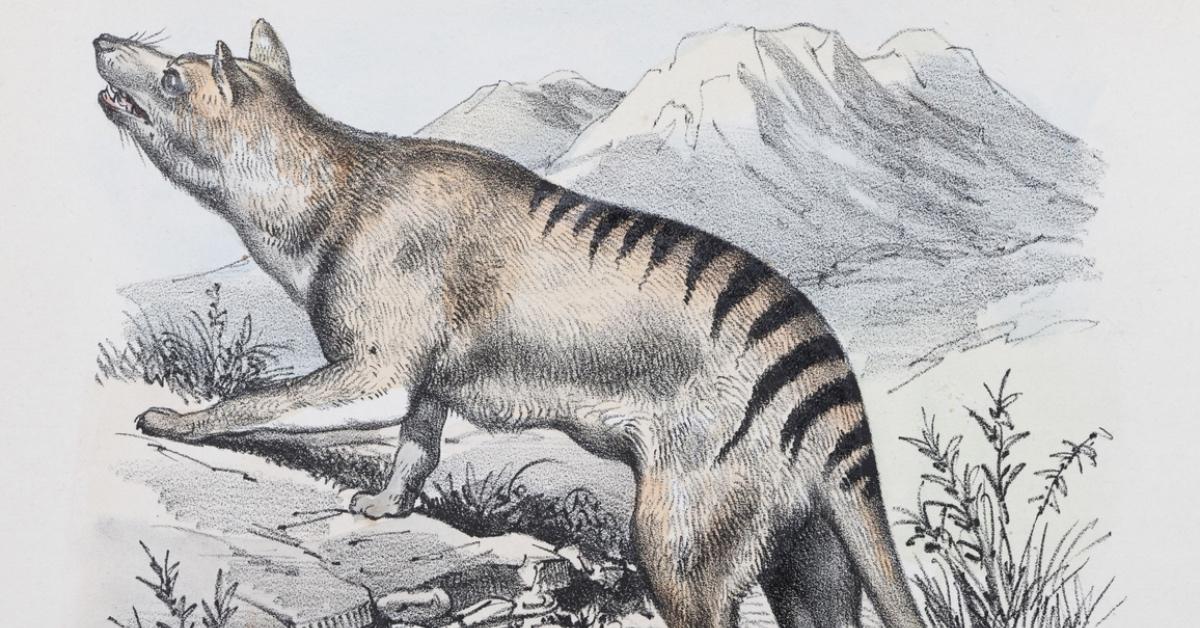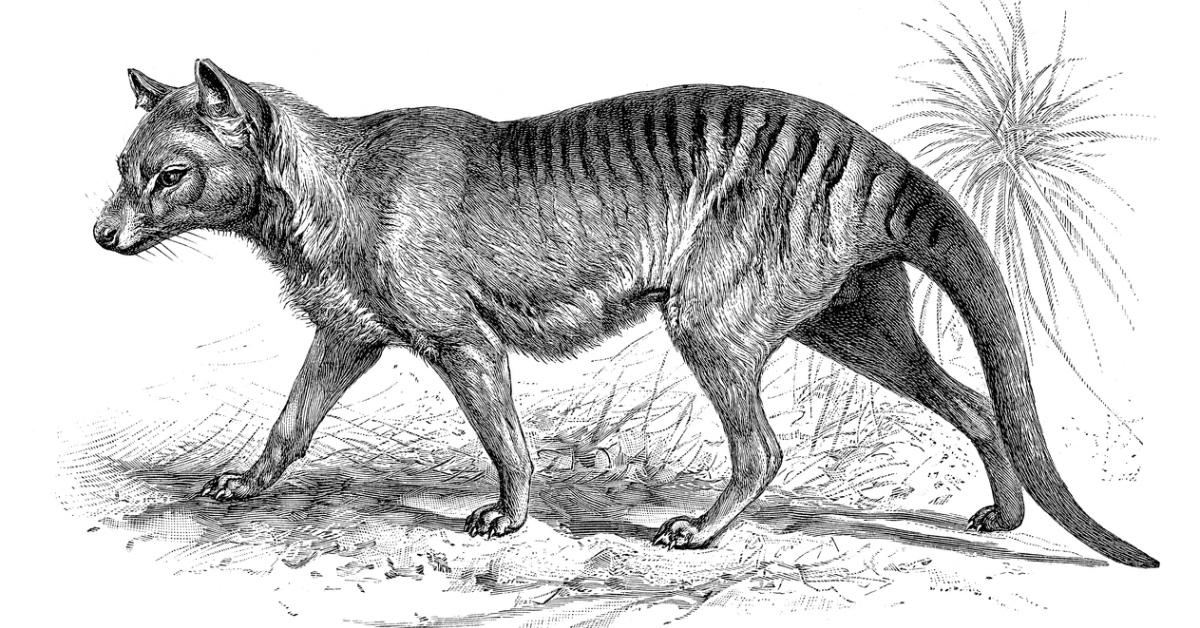Scientists Recover RNA From the Extinct Tasmanian Tiger — What Happens Next?
Published Sept. 20 2023, 1:00 p.m. ET

The dangers of mass extinction are alive and well in 2023. Between the climate crisis, pollution, and poaching, it's no surprise that nearly 700 new species are at risk (and that number is growing every day). Scientists have long studied extinct species to try and unravel the mysteries of life on Earth, including attempting to clone certain animals to bring them back from extinction — just look at the woolly mammoth, which scientists said they could bring back in 2021, per NPR.
However, especially with Jurassic Park in the pop culture zeitgeist, many are concerned that just because scientists can clone or resurrect an animal from long ago doesn't mean they should.
In September 2023, scientists successfully extracted RNA from a deceased Tasmanian tiger — but will they also attempt to clone this prehistoric predator? Here's what to know.

In September 2023, geneticists extracted RNA from a Tasmanian tiger.
On Sept. 20, 2023, CNN reported that geneticists have "isolated and decoded" RNA from a Tasmanian tiger, scientific name thylacine, which resembles a wolf with tiger-like stripes. The specimen is 130 years old and currently located in the Swedish Museum of Natural History in Stockholm. The discovery allowed geneticists to study better how the animal's genes functioned, and their findings were published in the scientific journal Genome Research.
According to The Australian Museum, thylacine is a now-extinct carnivorous marsupial. The creature lived all over Australia, including New Guinea and Tasmania. The exact reason for the thylacine's extinction isn't known, but scientists have long theorized it was humans who hunted them to persecution. Benjamin, the last known thylacine living in captivity, died of exposure in 1936 at the Beaumaris Zoo.
According to Reuters, while not the focus of the research, the ability to extract, analyze, and sequence old RNA could lead to scientists "recreating" extinct species.
"Although we remain skeptical about the possibility of actually recreating an extinct species using gene editing on living extant animal relatives — and the time-scale to get to a final point might be underestimated — we do advocate for more research on the biology of these extinct animals," said Emilio Mármol Sánchez, geneticist and lead author of the study.

Are scientists planning to clone a Tasmanian tiger?
Professor Andrew Pask of the University of Melbourne is the head of the Thylacine Integrated Genetic Restoration Research Lab and currently leads a project to resurrect the thylacine. He told CNN: "We had previously thought only DNA remained in old museum and ancient samples, but this paper shows you can also get RNA from tissues."
Pask added: "This will add significant depth to our understanding of the biology of extinct animals and help us to build much better extinct genomes."
The resurrection of a species works by editing the DNA of the creature's closest living relative. Then, scientists create embryos with the revised genomes and select a living surrogate mother, according to Science. So far, scientists have sequenced the genomes of roughly 20 extinct species, but as of 2022, none of these species have been recreated in a living relative.
Cloning is a similar process, and according to National Geographic, involves either embryo twinning or somatic cell nuclear transfer, which is when scientists "transfer the DNA from an animal's somatic cell into an egg cell that has had its nucleus and DNA removed. The egg develops into an embryo that contains the same genes as the cell donor." In either event, the cell is implanted into a uterus to grow.
In short, cloning may be off the table for now until scientists can successfully resurrect the species. After that, who knows?